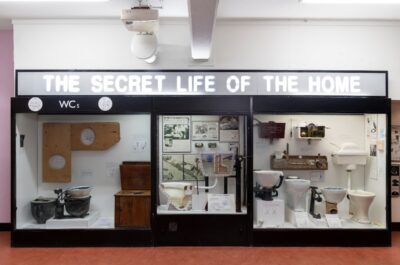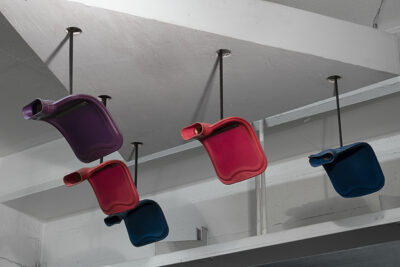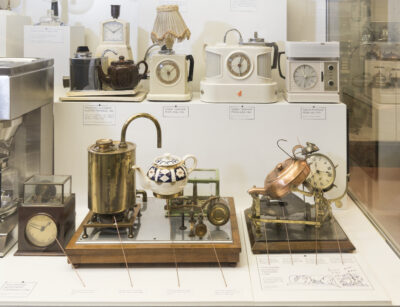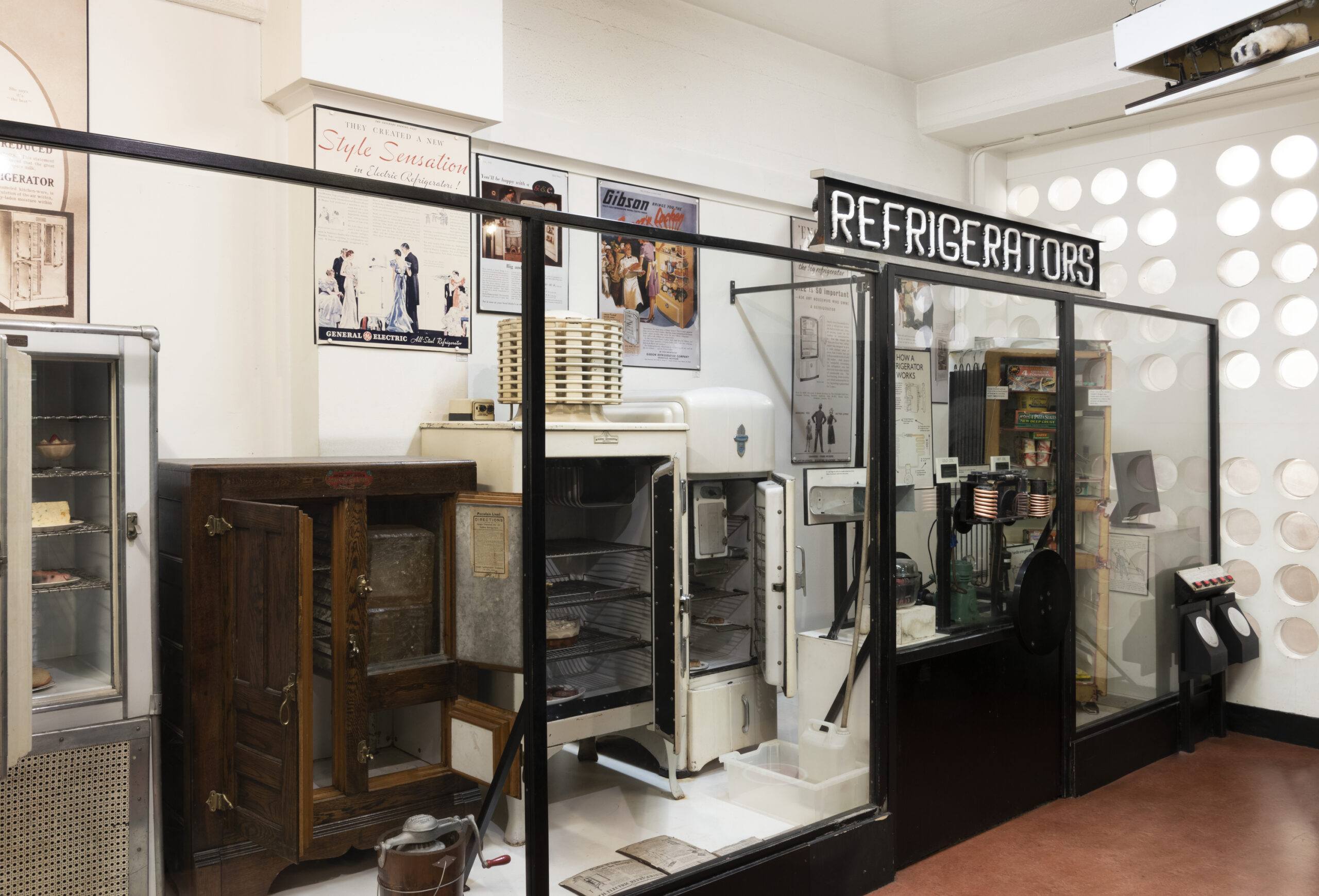Having welcomed millions of visitors across almost three decades, The Secret Life of the Home gallery is now showing advanced signs of wear and tear. Some of the bespoke interactive exhibits, such as the flushing toilet, are now sadly broken beyond repair and with ongoing maintenance of the gallery becoming increasingly resource intensive it is now time to say goodbye.
The gallery tells the story of how our homes have changed over time and reveals the hidden workings of everyday household objects. Through many intriguing items the gallery explores how domestic technology has evolved over the decades, displaying some of the earliest household inventions alongside more recent tools and technologies which might not look out of place in our homes today.

The idea for the gallery was conceived in the early 1990s when inventor Tim Hunkin was commissioned to redesign the museum’s Domestic Appliances gallery. Working with colleagues across the museum Hunkin created The Secret Life of the Home gallery, which opened in 1995 and invited visitors to take a closer look at the stories behind household appliances – many of which had been stripped back and taken apart so that you could see their inner workings.
Central to Hunkin’s vision was the inclusion of bespoke and whimsical interactive exhibits – from a motorised flock of hot water bottles to an interactive washing machine – which captured the imagination of visitors when they browsed the wide range of objects on display. The traditional display cases are crammed full of entertaining detail, odd objects, odd facts and old, often very funny, advertisements that trigger powerful waves of nostalgia and memories for many who have passed through its doors.

Its sections include Entertainment and Technology, featuring a Baird mirror-lid television from 1936, and Cleaning the home, showcasing vacuum cleaners such as the world’s first domestic robot cleaner, the Electrolux Trilobite ZA1 from 2003. Electricity in the home is explored with items such as an electric washing machine from the 1920s that was so unsafe it often gave electric shocks when wet.
The Heating the home section displays beautiful old heaters, such as the ‘Beatrice’ portable cylindrical gas heater from 1910, and Food preparation and storage contains, amongst other items, the Seeger refrigerating cabinet, c 1900 which kept food cold by using ice instead of electricity and a number of impressive Teasmades.

This gallery of everyday objects also illustrates a radically changing social landscape and consumer goods revolution. The arrival of electrified labour-saving household appliances, which today we take for granted, were not always so ubiquitous in the home.
Where once whole days were devoted to manually cleaning clothes, new washing technologies liberated women (in particular) from domestic drudgery and transformed their daily lives. In addition, cooking on electric hobs rather than over fireplaces or coal-powered stoves, electric vacuuming, the use of sewing machines and the ability to chill and freeze food gave people more time for other pursuits including education, leisure activities and paid work, resulting in more economic independence for many people.

Following nearly three decades of welcoming visitors (a testament itself to Hunkin’s robust design), we will soon say goodbye to this much-loved gallery.
Closing a gallery does provide the opportunity to tell new stories and engage our visitors with science in innovative ways through the reuse of these spaces, and this approach has enabled the creation of many new galleries across the museum.
In the last decade alone, we have opened our popular interactive children’s gallery Wonderlab: The Equinor Gallery; Zaha Hadid Architects-designed Mathematics: The Winton Gallery; Science City 1550-1800: The Linbury Gallery; Medicine: The Wellcome Galleries – the largest medicine galleries in the world – as well as our interactive Technicians: The David Sainsbury Gallery.
Engineers opened in June 2023, dedicated to the engineers that change the world, and earlier this year, we opened Energy Revolution: The Adani Green Energy Gallery, which examines the rapid energy transition and decarbonisation needed globally to limit climate change.
The long-term future of the space occupied by the gallery is now being considered by teams across the museum. After the gallery closes we will update our records of each object that was displayed in the gallery, adding new information and images to our online collection, before later carefully moving the items to a new home at the Science and Innovation Park, which will open later in 2024 for public tours, school and research visits.
You can delve into the stories explored in the gallery in our online series, Everyday Technology, and by listening to our podcast, A Brief History of Stuff, which is filled with fascinating stories about the ordinary objects around your home.

We’ll continue to celebrate this well-loved gallery across the Science Museum’s social channels until 2 June so do follow us via Facebook, Instagram and X/Twitter and we encourage you to share your memories of visits to the gallery with us. We’ll be sharing our team’s memories of the gallery in a new video shortly along with other behind-the-scenes moments.
So make sure you don’t miss your last chance to see this quirky and delightful gallery before it closes on 2 June (at the end of the May half term holidays). Book your free ticket to the museum on our website, and you never know, you may recognise things you once owned and loved!
